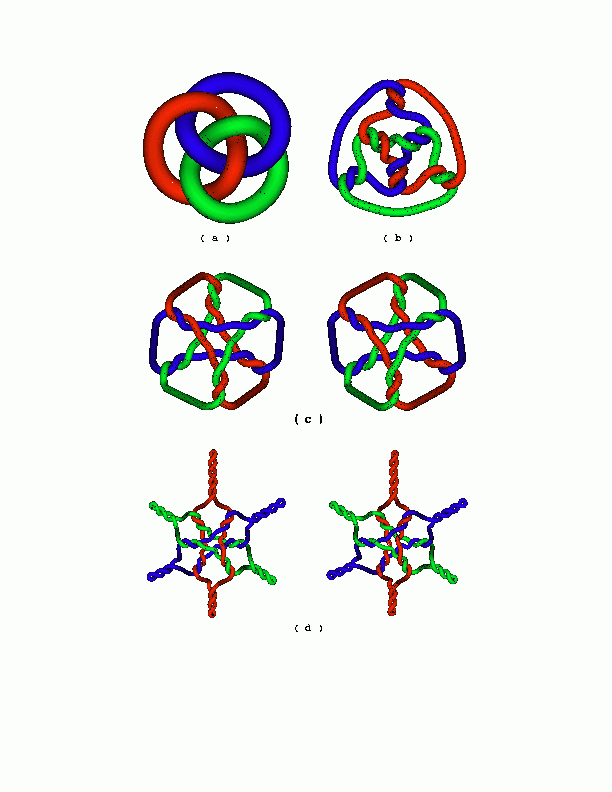
[a] Traditional Borromean Rings. Borromean rings are special links, because linkage between any pair of rings disappears in the absence of the third. The signs of the three nodes near the center of the drawing are negative, and the signs of the outer three nodes are positive.
[b] Borromean Rings with Each Node Replaced by Three Nodes. Each node of [a] has been replaced by three nodes, derived from 1.5 turns of DNA double helix. The inner double helices are right handed, corresponding to B-DNA, and the outer double helices are left handed, corresponding to Z-DNA. Think of this drawing like a polar projection of the Earth, where the center is at the North Pole, and every point on the circumference corresponds to the South Pole.
[c] Stereoscopic Representation of [b]. View this picture with stereo glasses, or learn to see stereo by diverging your eyes. The 'projection' of [b] is represented in 3-D, now. The three outer double helices have been folded under the inner double helices, so that a B-DNA 3-arm branched junction flanks the 'North Pole' of the object and a Z-DNA 3-arm branched junction flanks the 'South Pole' of the object.
[d] Stereoscopic Views of the DNA Molecules Synthesized. Two hairpins have been added to the 'equatorial' sections of each strand. Each hairpin contains a site for a restriction endonuclease, so that the Borromean property can be demonstrated in the test tube.
These drawings have been made using KnotPlot, by Rob Scharein.

Go to Individual Strand Sequences
Go to Borromean Ring Detailed Synthetic Protocol